sustainability
Planetary boundaries & sustainability
It's obvious, we only have one planet to live on, one that we unfortunately haven't taken very good care of. There are limits to what the earth can withstand!
But where do these boundaries go?
It is not entirely easy to know, but Johan Rockström at the Stockholm Resilience Center and his team have developed a system that allows us to understand and measure where these limits are. The research group has identified nine important areas, for each area limit values are shown in the model below.
The model is built with circles divided into nine parts, like a pie chart. Each part of the cake represents an area and the planet's alleys per area.

Green fields: The problem is not so great that we have exceeded a limit of what the planet can withstand. The boundary itself is called the planetary boundary.
Where the color is yellow, orange or red, we have exceeded the limits. Some parts of the circle are missing color and this is because the researchers have not yet managed to find enough data to be able to count and fill the diagram.
Since we have passed the limit of biogeochemical fluxes, it is important that we do everything we can to not make things worse, but try to improve. That's why we decided to make cleaning more eco-friendly and come up with cleaning products and cleaning tools that don't harm you or nature and don't move us closer to a planetary boundary.
THE IMPORTANCE OF USING CIRCULAR RAW MATERIALS
In a circular economy, things are used as long as possible.
When they break, they are fixed, made into something else or recycled.

COMPARISON OF VIRGIN RAW MATERIAL
In the example below, you first see a comparison of the production of one kilogram of palm oil and one kilogram of rapeseed oil. As you can see, palm oil has 10 kg of Co2 per kilogram while rapeseed oil has 2 kg of Co2 per kilogram, but both oils' Co2 emissions come mostly from the cultivation itself, that is, when we produce the raw material. It therefore matters which raw material we choose, but both oils have a large proportion of Co2 from production.

Västerbottenssoap is a circular product. It is made from rapeseed oil that has already been used once, purified and saponified into soap. We therefore do not use new oil raw material for our soap, but reuse already produced rapeseed oil. This means that virgin fat raw material is not produced for our sake and we have therefore excluded that part in the diagram for soap. The emissions otherwise needed during manufacturing are included under saponification and packaging.

When we produce soap, there are also emissions, albeit very small. We use electricity, transport and packaging in as sustainable and climate-smart a way as we can.
We are constantly working to reduce our footprint. For example, we have replaced some of our bottles with POP-prevented ocean plastic, plastic that has been picked up from beaches so as not to end up in the oceans. We are working to be able to replace all plastic with POP.
The calculations are made using: sustainability.alpla.com,
carboncloud.com, miljofordon.se, climatehero.me, postnord.se. We work
constantly updating numbers and making more accurate calculations.
We work continuously to update the calculations to make them match as well as possible.
We also want to thank Inlandet's technology park and Heligfjäll Ekosystem's sustainability consultant for Circular business models for reviewing our calculations.
Västerbottenssoap - environmentally friendly cleaning products
Västerbottensåpa is made in Vilhelmina, Sweden, from recycled rapeseed oil according to a basic recipe from 1926. It harms neither you nor nature and recycles used oil from selected restaurants - oil that would otherwise end up as waste.
- By using our natural and easily degradable soap, you reduce the amount of harmful chemicals in the home.
- By reusing the spray bottle and filling up with our small refills, you reduce the use of plastic.
- 45% of all the world's emissions come from people's way of producing new raw materials. By choosing Västerbottenssoap, which is a reusable product, you contribute to the transition to a circular economy and reduced emissions. Thank you for being part of the climate change work.

Sara, her husband Magnus and son Albert helped with the beach cleanup at Callao, Surf Beach in Arguineguin, Gran Canaria, Spain, in November 2022, organized by Oceans4Life. 11 garbage bags with plastic were collected and sent for recycling.
The refill bottles are made of POP, Prevented Ocean Plastic, recycled plastic picked from beaches around the world. The plastic is collected within a radius of 50 km from the coast or waterways that flow into the sea. The POP program prevents over 1000 tons of plastic from reaching the ocean each month and offers robust, high-quality recycled plastic.
The production of recycled plastic emits 5 times less carbon dioxide than "new plastic", plus the POP program prevents it from ending up in the ocean.
Discover our cleaning product collection
